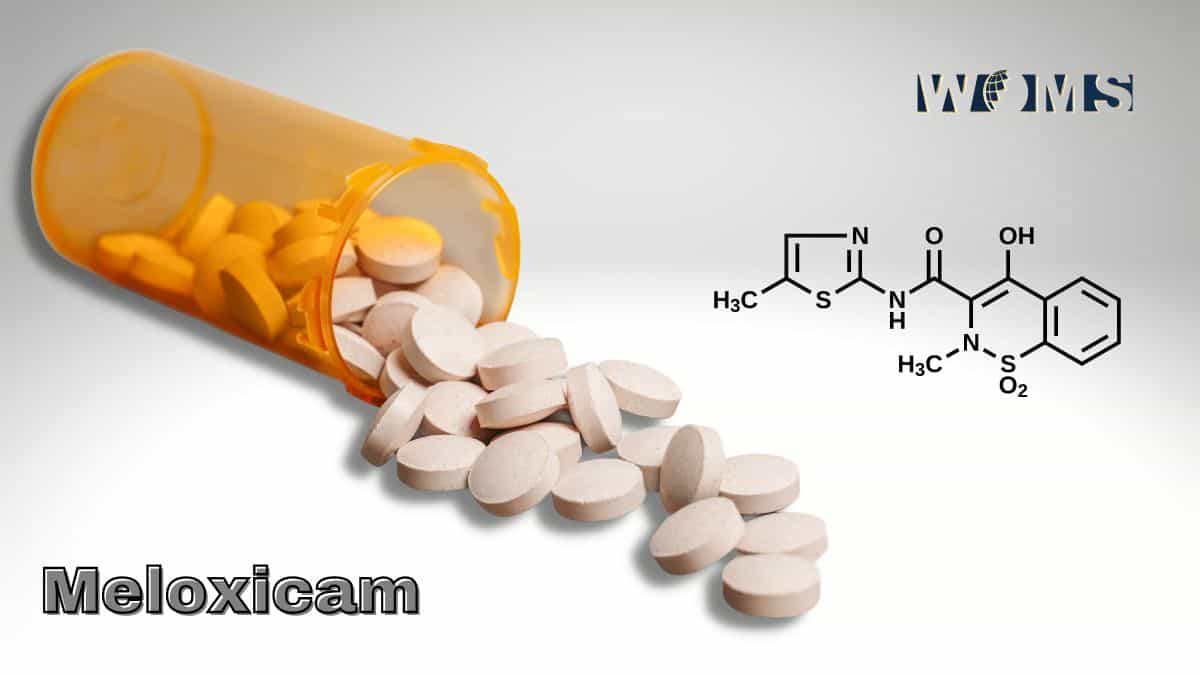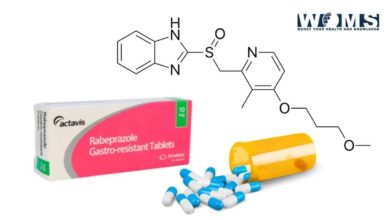Meloxicam: Does the Benefit Outweigh the Effects?

Meloxicam is a non-steroidal anti-inflammatory drug (NSAID) that is commonly used to relieve pain, inflammation, and stiffness associated with various conditions such as osteoarthritis and rheumatoid arthritis. It works by reducing the production of certain chemicals in the body that cause inflammation and pain.
What’s the generic of a meloxicam tablet?
The generic name for Meloxicam is, well, Meloxicam. In other words, Meloxicam itself is both the brand name and the generic name of the medication. When you see the tablets, they are already the generic version of the drug.
To clarify, brand-name medications are often given a specific name by the pharmaceutical company that develops and markets them, while the generic name refers to the active ingredient of the medication. In the case of Meloxicam, it is available under various brand names, depending on the manufacturer, but the active ingredient remains Meloxicam regardless of the brand.
Why it is used?
Meloxicam is primarily used to relieve pain, inflammation, and stiffness associated with certain conditions, most commonly:
Osteoarthritis
It is a degenerative joint disease that causes the breakdown of cartilage and joint inflammation. It helps reduce pain and inflammation in individuals with osteoarthritis, improving their mobility and overall quality of life.
Rheumatoid Arthritis
It is an autoimmune disease where the immune system attacks the joints, leading to inflammation, pain, and joint damage. Meloxicam can help manage the symptoms of rheumatoid arthritis by reducing inflammation and alleviating pain.
Juvenile Rheumatoid Arthritis
This condition affects children and adolescents, causing joint inflammation and stiffness. Meloxicam may be prescribed by a healthcare professional to help manage the symptoms and improve mobility in young patients.
Ankylosing Spondylitis
It is a chronic inflammatory disease that primarily affects the spine, causing pain and stiffness. Meloxicam can provide relief by reducing inflammation and improving mobility in individuals with ankylosing spondylitis.
It’s important to note that Meloxicam is a prescription medication, and its use should be determined by a doctor. He/she will evaluate your specific condition, medical history, and individual needs to determine if Meloxicam is appropriate for you and provide the recommended dosage. Always follow the instructions and guidance provided by your doctor or pharmacist when taking it or any other NSAID medication.
Dosage of Meloxicam
The appropriate dose of Meloxicam can vary depending on the condition being treated and individual factors such as age, weight, and overall health. It’s important to follow the dosage prescribed by your healthcare provider or pharmacist. The following are general guidelines for the recommended doses of Meloxicam:
Osteoarthritis and Rheumatoid Arthritis
The usual starting dose is 7.5 mg once daily.
If needed, the dose can be increased to a maximum of 15 mg once daily.
Juvenile Rheumatoid Arthritis
The dose is based on the child’s weight.
The usual starting dose is 0.125 mg/kg once daily, up to a maximum of 7.5 mg.
Ankylosing Spondylitis
The usual dose is 15 mg once daily.
it’s important to note that these are general guidelines and your doctor may adjust the dose based on your specific needs and response to the medication. It’s recommended to take Meloxicam with food to help reduce the risk of gastrointestinal side effects.
It’s crucial to strictly follow the prescribed dosage and not exceed the recommended limits. Taking more than the prescribed dose or using Meloxicam for longer than advised can increase the risk of side effects.
You may also, read Drugs or products that may increase cancer risk
How does Meloxicam is works?
It is a class of medications known as non-steroidal anti-inflammatory drugs (NSAIDs). It works by inhibiting the production of certain chemicals in the body called prostaglandins.
Prostaglandins are substances that are produced in response to injury or inflammation. They play a role in promoting pain, inflammation, and swelling at the site of injury or in affected joints. By inhibiting the production of prostaglandins, it helps to reduce pain, inflammation, and swelling in the body.
Specifically, It blocks the action of an enzyme called cyclooxygenase (COX), which is responsible for the production of prostaglandins. There are two forms of COX: COX-1 and COX-2. COX-1 is involved in maintaining normal bodily functions, including protecting the stomach lining, while COX-2 is primarily involved in inflammation. It selectively inhibits COX-2, thereby targeting inflammation while having fewer effects on COX-1, which helps reduce the risk of stomach irritation and ulcers.
By reducing inflammation and pain, Meloxicam can help improve symptoms and increase the ability to engage in daily activities for individuals with conditions such as osteoarthritis, rheumatoid arthritis, and other inflammatory conditions.
Side effects of meloxicam
It can cause side effects in some individuals. Not everyone experiences side effects, and the severity and frequency of side effects can vary from person to person. Some common side effects of Meloxicam may include:
Gastrointestinal issues
These can include stomach upset, abdominal pain, indigestion, nausea, vomiting, diarrhea, or constipation. In some cases, Meloxicam can increase the risk of stomach ulcers or bleeding, particularly with long-term use or in individuals with a history of stomach problems.
Dizziness or drowsiness
Some people may experience dizziness or drowsiness while taking the drug. It’s important to use caution when performing activities that require alertness, such as driving or operating machinery.
Headache
Headaches are a potential side effect of the drug.
Fluid retention and edema
In rare cases, it may cause fluid retention, leading to swelling in the hands, ankles, or feet.
Allergic reactions
Although rare, some individuals may experience allergic reactions to Meloxicam, characterized by symptoms such as rash, itching, swelling, severe dizziness, or difficulty breathing. Allergic reactions require immediate medical attention.
Cardiovascular effects
Long-term use or high doses of Meloxicam may slightly increase the risk of cardiovascular events such as heart attack or stroke. This risk may be higher in individuals with existing cardiovascular conditions or risk factors like high blood pressure, heart disease, or a history of stroke.
Kidney effects
It can affect kidney function, particularly in individuals with pre-existing kidney disease. It may lead to reduced urine production, fluid retention, or worsening of kidney function. It’s important to monitor kidney function during treatment with Meloxicam, especially in older adults or those with kidney impairment.
Liver effects
Although rare, Meloxicam can cause liver problems, including elevated liver enzymes or hepatitis. If you experience symptoms such as yellowing of the skin or eyes (jaundice), dark urine, or persistent abdominal pain, it’s important to seek medical attention.
Central nervous system effects
It can rarely cause central nervous system side effects such as confusion, depression, hallucinations, or seizures. Top of FormBottom of Form
Other side effects
Less common side effects may include ringing in the ears (tinnitus), and changes in blood counts.
It’s important to promptly report any concerning or persistent side effects to your doctors. They can provide guidance, evaluate your specific situation, and determine the appropriate course of action.
Interaction with Other Medication
Meloxicam can potentially interact with other medications, including prescription drugs, over-the-counter medications, and herbal supplements. It’s important to inform your healthcare provider about all the medications you are taking, including any recent changes, to minimize the risk of interactions.
Here are some notable interactions with Meloxicam:
Other Non-steroidal Anti-Inflammatory Drugs (NSAIDs)
Taking it with other NSAIDs, such as aspirin, ibuprofen, or naproxen, can increase the risk of gastrointestinal bleeding and may also enhance the cardiovascular risks associated with these drugs.
Anticoagulants (Blood Thinners)
Concurrent use of Meloxicam with anticoagulant medications like warfarin or heparin may increase the risk of bleeding. Regular monitoring of blood clotting parameters may be necessary.
Antiplatelet Drugs
Combining Meloxicam with antiplatelet drugs, such as clopidogrel or aspirin, can increase the risk of bleeding and should be done with caution.
Selective Serotonin Reuptake Inhibitors (SSRIs) and Serotonin-Norepinephrine Reuptake Inhibitors (SNRIs): Concurrent use of Meloxicam with SSRIs or SNRIs, which are commonly used antidepressants, may increase the risk of gastrointestinal bleeding.
Diuretics
The drug may reduce the efficacy of diuretics (water pills) and other medications used to manage blood pressure or fluid balance.
ACE Inhibitors and Angiotensin Receptor Blockers (ARBs)
Taking Meloxicam with ACE inhibitors or ARBs, which are medications used to manage high blood pressure, may reduce the effectiveness of these drugs and potentially increase blood pressure.
Lithium
Meloxicam may increase the concentration of lithium in the blood, potentially leading to lithium toxicity. Close monitoring of lithium levels is important if these medications are used together.
Methotrexate
Concurrent use of Meloxicam with methotrexate, a medication used to treat certain types of cancer, rheumatoid arthritis, and other conditions, may increase the risk of methotrexate toxicity. Regular monitoring of blood counts and liver function is necessary in such cases.
Precaution to avoid risk factors
There are several precautions to consider when using Meloxicam. These precautions include:
Allergic Reactions
If you have a known allergy to Meloxicam or other NSAIDs (such as aspirin or ibuprofen), it’s important to avoid using Meloxicam. Allergic reactions to Meloxicam can be serious and may include symptoms such as rash, itching, swelling, dizziness, or difficulty breathing. Go for immediate medical attention if you experience any signs of an allergic reaction.
Cardiovascular Risk
Meloxicam, like other NSAIDs, may increase the risk of cardiovascular events such as heart attack or stroke, especially with long-term use or in individuals with existing cardiovascular conditions. It’s important to discuss your cardiovascular specialist and any risk factors with your doctor before starting Meloxicam.
Gastrointestinal Risk
The drug can increase the risk of stomach ulcers, bleeding, and perforation, particularly in older adults or individuals with a history of stomach ulcers or bleeding. To reduce this risk, it’s generally recommended to take the lowest effective dose of Meloxicam for the shortest duration possible. It’s important to promptly report any signs of gastrointestinal issues, such as abdominal pain, black, tarry stools, or vomiting blood, to your doctor.
Kidney Function
It can affect kidney function, particularly in individuals with pre-existing kidney disease. It’s important to monitor kidney function during treatment with Meloxicam, especially in older adults or those with reduced kidney function. Inform your doctor, if you have any history of kidney problems.
Asthma and Allergic Reactions
The drug may trigger asthma attacks or other allergic reactions, especially in individuals with a history of asthma or allergies. It’s important to use the drug with caution in such cases and discuss any concerns with your healthcare service holder.
Pregnancy and Breastfeeding
It is generally not recommended during pregnancy, particularly in the third trimester, as it may harm the unborn baby or cause complications during delivery. It is also not recommended while breastfeeding, as small amounts of the drug may pass into breast milk.




